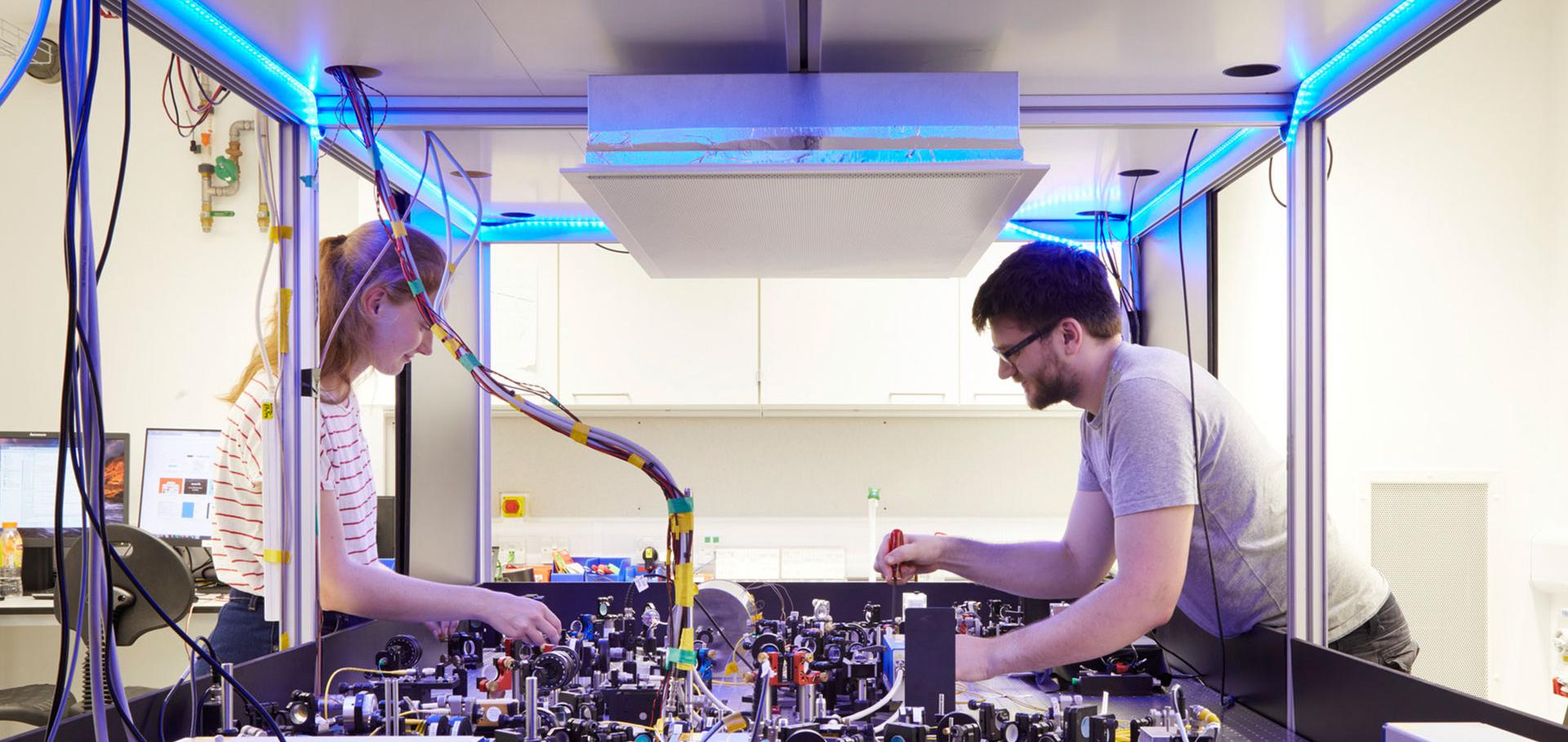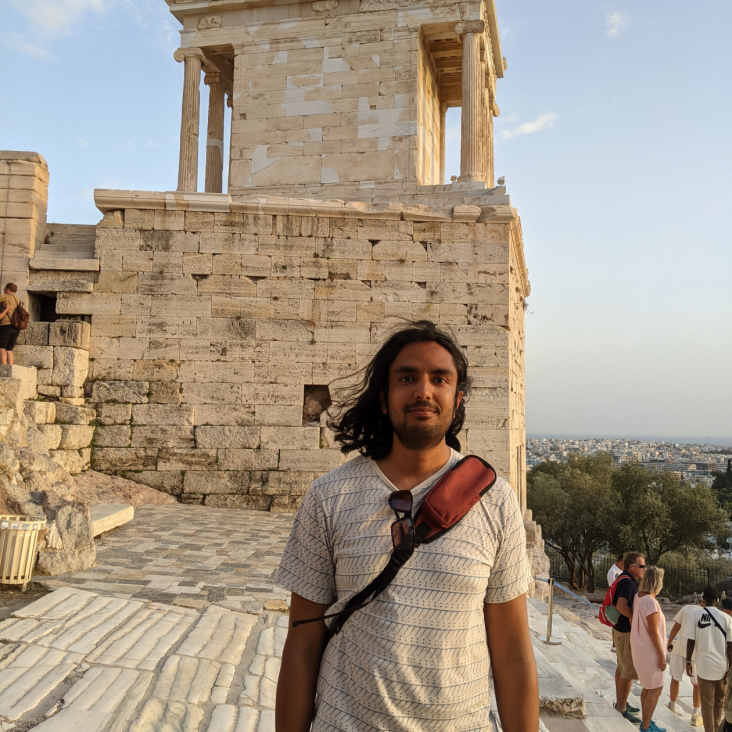An elementary quantum network of entangled optical atomic clocks
Nature Springer Nature 609:7928 (2022) 689-694
Abstract:
Optical atomic clocks are our most precise tools to measure time and frequency1,2,3. Precision frequency comparisons between clocks in separate locations enable one to probe the space–time variation of fundamental constants4,5 and the properties of dark matter6,7, to perform geodesy8,9,10 and to evaluate systematic clock shifts. Measurements on independent systems are limited by the standard quantum limit; measurements on entangled systems can surpass the standard quantum limit to reach the ultimate precision allowed by quantum theory—the Heisenberg limit. Although local entangling operations have demonstrated this enhancement at microscopic distances11,12,13,14,15,16, comparisons between remote atomic clocks require the rapid generation of high-fidelity entanglement between systems that have no intrinsic interactions. Here we report the use of a photonic link17,18 to entangle two 88Sr+ ions separated by a macroscopic distance19 (approximately 2 m) to demonstrate an elementary quantum network of entangled optical clocks. For frequency comparisons between the ions, we find that entanglement reduces the measurement uncertainty by nearly 2‾√, the value predicted for the Heisenberg limit. Today’s optical clocks are typically limited by dephasing of the probe laser20; in this regime, we find that entanglement yields a factor of 2 reduction in the measurement uncertainty compared with conventional correlation spectroscopy techniques20,21,22. We demonstrate this enhancement for the measurement of a frequency shift applied to one of the clocks. This two-node network could be extended to additional nodes23, to other species of trapped particles or—through local operations—to larger entangled systems.Experimental quantum key distribution certified by Bell's theorem
Nature Springer Nature 607:7920 (2022) 682-686
Abstract:
Cryptographic key exchange protocols traditionally rely on computational conjectures such as the hardness of prime factorization<sup>1</sup> to provide security against eavesdropping attacks. Remarkably, quantum key distribution protocols such as the Bennett-Brassard scheme<sup>2</sup> provide information-theoretic security against such attacks, a much stronger form of security unreachable by classical means. However, quantum protocols realized so far are subject to a new class of attacks exploiting a mismatch between the quantum states or measurements implemented and their theoretical modelling, as demonstrated in numerous experiments<sup>3-6</sup>. Here we present the experimental realization of a complete quantum key distribution protocol immune to these vulnerabilities, following Ekert's pioneering proposal<sup>7</sup> to use entanglement to bound an adversary's information from Bell's theorem<sup>8</sup>. By combining theoretical developments with an improved optical fibre link generating entanglement between two trapped-ion qubits, we obtain 95,628 key bits with device-independent security<sup>9-12</sup> from 1.5 million Bell pairs created during eight hours of run time. We take steps to ensure that information on the measurement results is inaccessible to an eavesdropper. These measurements are performed without space-like separation. Our result shows that provably secure cryptography under general assumptions is possible with real-world devices, and paves the way for further quantum information applications based on the device-independence principle.Breaking the entangling gate speed limit for trapped-ion qubits using a phase-stable standing wave
Physical Review Letters American Physical Society 131:22 (2023) 220601
Abstract:
All laser-driven entangling operations for trapped-ion qubits have hitherto been performed without control of the optical phase of the light field, which precludes independent tuning of the carrier and motional coupling. By placing 88Sr+ ions in a λ=674 nm standing wave, whose relative position is controlled to ≈λ/100, we suppress the carrier coupling by a factor of 18, while coherently enhancing the spin-motion coupling. We experimentally demonstrate that the off-resonant carrier coupling imposes a speed limit for conventional traveling-wave Mølmer-Sørensen gates; we use the standing wave to surpass this limit and achieve a gate duration of 15 μs, restricted by the available laser power.Robust quantum memory in a trapped-ion quantum network node
(2022)
Universal hybrid quantum computing in trapped ions
Physical Review A American Physical Society 104:3 (2021) 32609


